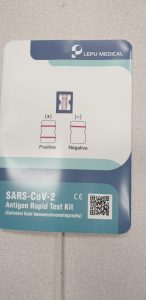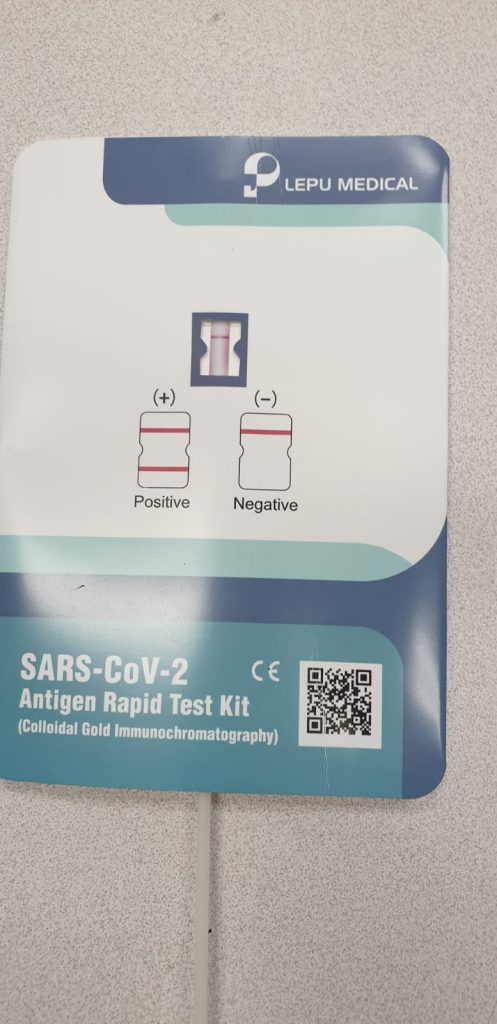Multidrug-resistant (MDR) Pseudomonas aeruginosa infections pose a severe well being menace. Bacteriophage-antibiotic mixture remedy is a promising candidate for combating these infections. A 5-phage P. aeruginosa cocktail, PAM2H, was examined together with antibiotics (ceftazidime, ciprofloxacin, gentamicin, meropenem) to decide if PAM2H enhances antibiotic exercise. Combination remedy in vitro resulted in a big improve in susceptibility of MDR strains to antibiotics.
Treatment with ceftazidime (CAZ), meropenem, gentamicin, or ciprofloxacin within the presence of the phage elevated the quantity of P. aeruginosa strains inclined to these antibiotics by 63%, 56%, 31%, and 81%, respectively. Additionally, in a mouse dorsal wound mannequin, seven of eight mice handled with a mix of CAZ and PAM2H for 3 days had no detectable micro organism remaining of their wounds on day 4, whereas all mice handled with CAZ or PAM2H alone had ~107 colony forming models (CFU) remaining of their wounds. P. aeruginosa recovered from mouse wounds post-treatment confirmed decreased virulence in a wax worm mannequin, and DNA sequencing indicated that the mixture remedy prevented mutations in genes encoding recognized phage receptors. Treatment with PAM2H together with antibiotics resulted within the re-sensitization of P. aeruginosa to antibiotics in vitro and a synergistic discount in bacterial burden in vivo.
First Description of a Temperate Bacteriophage (vB _FhiM _KIRK) of Francisella hispaniensis Strain 3523
Here we current the characterization of a Francisella bacteriophage (vB_FhiM_KIRK) together with the morphology, the genome sequence and the induction of the prophage. The prophage sequence (FhaGI-1) has beforehand been recognized in F. hispaniensis pressure 3523. UV radiation induced the prophage to assemble phage particles consisting of an icosahedral head (~52 nm in diameter), a tail of up to 97 nm in size and a imply width of 9 nm.
The double stranded genome of vB_FhiM_KIRK comprises 51 open studying frames and is 34,259 bp in size. The genotypic and phylogenetic evaluation indicated that this phage appears to belong to the Myoviridae household of bacteriophages. Under the situations examined right here, host cell (Francisella hispaniensis 3523) lysis exercise of KIRK was very low, and the phage particles appear to be faulty for infecting new bacterial cells. Nevertheless, recombinant KIRK DNA was in a position to combine site-specifically into the genome of completely different Francisella species after DNA transformation.
Bacteriophages towards Vibrio coralliilyticus and Vibrio tubiashii: Isolation, Characterization and Remediation of Larval Oyster Mortalities
Vibrio coralliilyticus and Vibrio tubiashii are pathogens chargeable for excessive larval oyster mortalities in shellfish hatcheries. Bacteriophage remedy was evaluated to decide its potential to remediate these mortalities. Sixteen phages towards V. coralliilyticus and V. tubiashii had been remoted and characterised from Hawaiian seawater. Fourteen isolates had been members of the Myoviridae household and two had been Siphoviridae In proof-of-principle trials, a cocktail of 5 phages decreased mortalities of larval Eastern oysters (Crassostrea virginica) and Pacific oysters (Crassostrea gigas) by up to 91% at 6 days post-challenge with deadly doses of V. coralliilyticus Larvae survival relied on the oyster species, the amount of phages and vibrios utilized, and the species and pressure of Vibrio A later-generation cocktail, designated VCP300, was formulated with three lytic phages subsequently named Vibrio phage vB_VcorM-GR7B; vB_VcorM-GR11A, and vB_VcorM-GR28A (abbreviated 7B, 11A and 28A).
Together, these three phages displayed host specificity towards eight V. coralliilyticus strains and a V. tubiashii pressure. Larval C. gigas mortalities from V. coralliilyticus strains RE98 and OCN008 had been considerably decreased by > 90% (P < 0.0001) over 6 days with phage remedy in contrast to untreated controls. Genomic sequencing of phages 7B, 11A and 28A revealed 207,758; 194,800; and 154,046 bp, linear DNA genomes, respectively, with the latter exhibiting 92% similarity to V. coralliilyticus phage YC, a pressure from the Great Barrier Reef, Australia. Phage 7B and 11A genomes confirmed little similarity to phages within the NCBI database. This research demonstrates the promising potential for phage remedy to cut back larval oyster mortalities in oyster hatcheries.
IMPORTANCEShellfish hatcheries encounter episodic outbreaks of larval oyster mortalities, jeopardizing the financial stability of the hatcheries and business shellfish trade. Shellfish pathogens, like Vibrio coralliilyticus and Vibrio tubiashii, have been acknowledged as main contributors of larval oyster mortalities in U.S. East and West Coast hatcheries for a few years. This research remoted, recognized, and characterised bacteriophages towards these Vibrio species, and demonstrated their means to cut back mortalities from V. coralliilyticus in larval Pacific oysters and each V. coralliilyticus and V. tubiashii in larval Eastern oysters. Phage remedy provides a promising method in stimulating hatchery manufacturing to make sure the well-being of hatcheries and the business oyster commerce.

Neutralizing Human Antibodies towards Severe Acute Respiratory Syndrome Coronavirus 2 Isolated from a Human Synthetic Fab Phage Display Library
Since it was first reported in Wuhan, China, in 2019, the extreme acute respiratory syndrome coronavirus 2 (SARS-CoV-2) has prompted a pandemic outbreak leading to an incredible world menace due to its unprecedented fast unfold and an absence of a prophylactic vaccine or therapeutic medication treating the virus.
The receptor-binding area (RBD) of the SARS-CoV-2 spike protein is a key participant within the viral entry into cells via its interplay with the angiotensin-converting enzyme 2 (ACE2) receptor protein, and the RBD has subsequently been essential as a drug goal. In this research, we used phage show to develop human monoclonal antibodies (mAbs) that neutralize SARS-CoV-2.
A human artificial Fab phage show library was panned towards the RBD of the SARS-CoV-2 spike protein (SARS-2 RBD), yielding ten distinctive Fabs with average obvious affinities (EC50 = 19-663 nM) for the SARS-2 RBD. All of the Fabs confirmed no cross-reactivity to the MERS-CoV spike protein, whereas three Fabs cross-reacted with the SARS-CoV spike protein.
Five Fabs confirmed neutralizing actions in in vitro assays based mostly on the Fabs’ actions antagonizing the interplay between the SARS-2 RBD and ACE2. Reformatting the 5 Fabs into immunoglobulin Gs (IgGs) enormously elevated their obvious affinities (OkD = 0.08-1.Zero nM), presumably due to the results of avidity, with out compromising their non-aggregating properties and thermal stability. Furthermore, two of the mAbs (D12 and C2) considerably confirmed neutralizing actions on pseudo-typed and genuine SARS-CoV-2.
Given their fascinating properties and neutralizing actions, we anticipate that these human anti-SARS-CoV-2 mAbs can be appropriate reagents to be additional developed as antibody therapeutics to deal with COVID-19, in addition to for diagnostics and analysis instruments.

